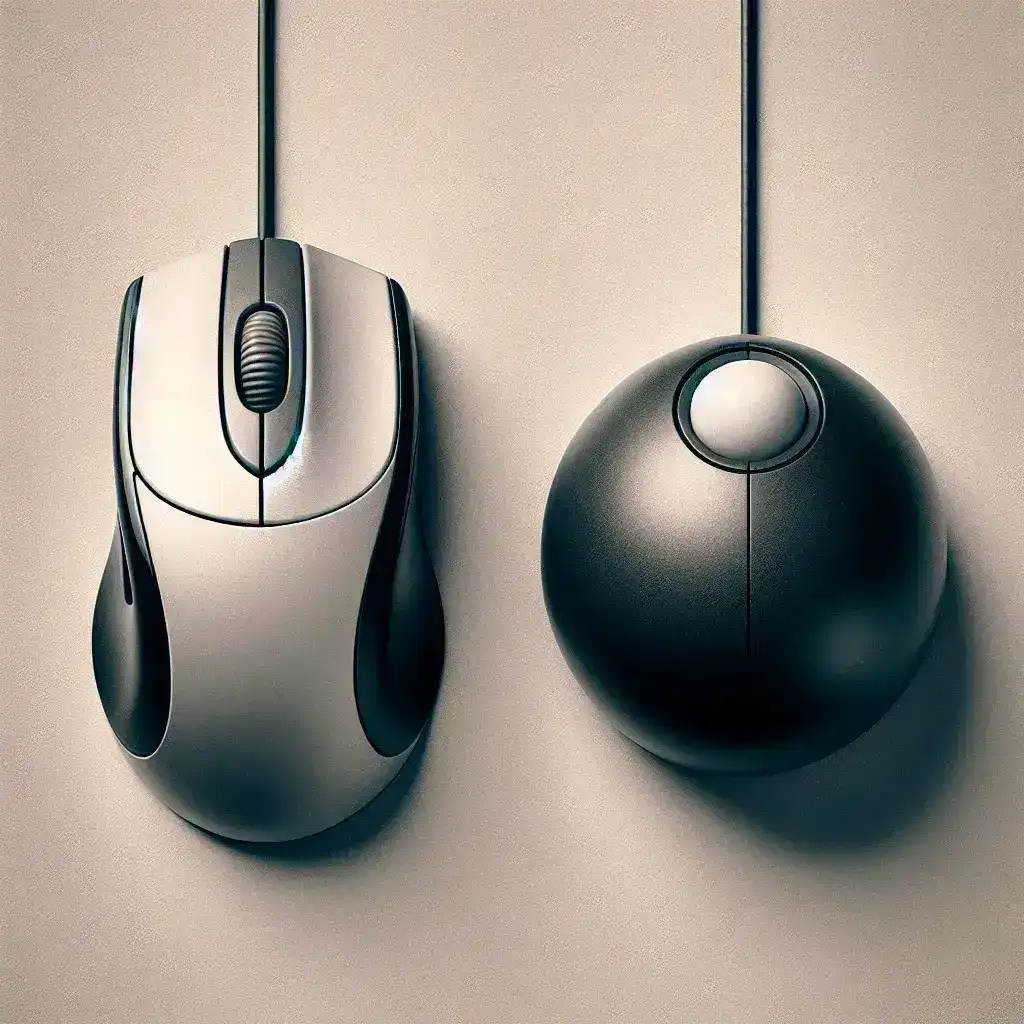In the realm of computer peripherals, the conventional mouse has long reigned as the primary tool for navigating graphical user interfaces. However, an alternative exists that offers distinct benefits: the trackball. This article delves into how trackballs differ in functionality from standard computer mice, covering various aspects such as design, usability, and ergonomic benefits.
Design and Mechanics
To understand the core differences between a trackball and a standard computer mouse, it is essential first to look at their design and mechanical differences.
| Aspect | Trackball | Standard Mouse |
|---|---|---|
| Movement | Stationary; ball is rotated to move the cursor | Device itself is moved to move the cursor |
| Size and Ergonomics | Often larger; meant to minimize arm and wrist movement | Widely varies; usually requires more arm and wrist movement |
| Buttons | Typically have multiple customizable buttons | Standard configuration includes left, right buttons, and a scroll wheel |
While both devices serve the same basic function of navigating a computer interface, their mechanical differences result in unique user experiences.
Usability
Precision and Control
Trackballs are generally known for offering greater precision and control compared to standard mice. Because the trackball is moved with the fingers rather than the entire hand, fine cursor adjustments are easier to perform. This makes trackballs particularly popular in fields that require precise control, such as graphic design and computer-aided design (CAD).
Space Efficiency
A trackball remains stationary, making it much more space-efficient. This characteristic can be highly beneficial in confined workspaces. Users do not need an extensive area on their desk to move the device around, as is the case with a standard mouse.
Learning Curve
One drawback of the trackball is its steeper learning curve. Many users who are accustomed to a traditional mouse may find it challenging to adapt to the different mechanics of a trackball. It may take some time to become proficient.
Ergonomics
The design and mechanics of a trackball significantly impact ergonomics, offering potential health benefits.
Reduction in Strain
Using a standard mouse often involves extensive wrist and arm movement, which can lead to repetitive strain injuries over time. Trackballs mitigate this by allowing users to navigate the cursor without moving their arm, thus reducing the overall strain on muscles and joints.
Customizable Buttons
Many trackballs come equipped with multiple buttons that can be customized to perform specific functions. This allows users to set up shortcuts that can further reduce the physical stress associated with repetitive tasks.
Target Audience
Different groups of users might find advantages in using trackballs over standard mice. Here are some examples:
Professional Users
As noted earlier, professionals in graphic design, CAD, and similar fields can benefit from the precision offered by trackballs.
Users with Limited Desk Space
Those who work in cramped or confined areas will find the space efficiency of a trackball very useful.
Individuals with Repetitive Strain Injuries
For individuals susceptible to repetitive strain injuries, the ergonomics of a trackball can offer significant relief.
Conclusion
The functionality differences between trackballs and standard computer mice are substantial, impacting factors ranging from precision and space efficiency to ergonomics and user target groups. While the traditional mouse remains versatile and widely accepted, the trackball presents compelling advantages that make it a valuable alternative for certain users. By understanding these differences, individuals and organizations can make more informed choices about their computing peripherals, optimizing both productivity and user comfort.

